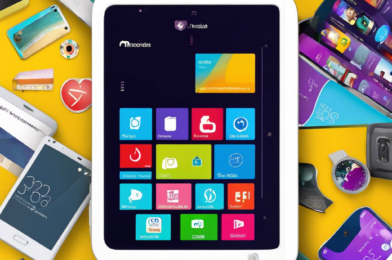Whether you’re a student, a professional, or just someone looking for a new device, buying a new laptop can be a daunting task. With so many options on the market, it’s hard to know where to start. That’s why we’ve created this comprehensive laptop buying guide to help you find your perfect match. From understanding your needs to navigating the sea of specifications, we’ll break down everything you need to consider to make an informed decision. So, whether you’re looking for a machine to handle complex tasks or just something simple for everyday use, read on to discover the key factors that will help you choose the ideal laptop for your needs.
First and foremost, it’s important to identify your primary purpose for purchasing a laptop. Are you a gamer looking for a high-performance machine to run the latest titles? Or perhaps you’re a student in need of a lightweight and portable device for taking notes in lectures? Maybe you’re a creative professional requiring a powerful laptop with a high-resolution display for editing photos and videos. Understanding your specific needs will narrow down the vast array of options and help you focus on the features that truly matter to you. By defining your primary purpose, you can ensure that your new laptop is a perfect match for your lifestyle and daily tasks.
When it comes to laptop performance, the processor (CPU) plays a critical role. Think of the CPU as the brain of your laptop, executing all the instructions that make your device function. For basic tasks like web browsing and word processing, a less powerful processor will suffice, but if you plan on using more demanding applications, you’ll need a higher-performance CPU. Currently, the market is dominated by two major players: Intel and AMD. Both companies offer a wide range of processors, from entry-level to high-end, so be sure to research the specific models that align with your intended usage.
Another crucial component that influences your laptop’s performance is the random access memory (RAM). RAM allows your device to juggle multiple tasks and applications simultaneously. The more RAM your laptop has, the smoother and faster it will handle demanding workloads. For basic users, 4GB of RAM can be sufficient, but if you want to future-proof your device or plan on running memory-intensive applications, consider opting for 8GB or 16GB. Having ample RAM will ensure that your laptop doesn’t slow you down, especially when multitasking or working with large files.
When considering a new laptop, the storage type and capacity are essential factors that can significantly impact your user experience. Traditional hard disk drives (HDDs) offer ample storage space but tend to be slower, while solid-state drives (SSDs) provide faster performance, enhancing overall system speed and responsiveness. If you plan on storing large media files or installing demanding applications, it’s advisable to opt for a larger storage capacity. Alternatively, you can strike a balance by choosing a laptop with a smaller SSD and relying on cloud storage or external hard drives for additional space.
The display is a crucial aspect of the laptop-buying decision, as it directly affects your viewing experience and comfort. When considering the screen size, reflect on your intended use and portability requirements. Smaller screens, typically ranging from 11 to 13 inches, offer lightweight designs perfect for travelers and students. On the other hand, larger screens measuring 15 inches or more are ideal for professionals or gamers who prioritize immersive visuals and a spacious workspace. Additionally, pay attention to the display resolution, as a higher resolution will provide sharper and more detailed images.
While often overlooked, the keyboard and touchpad are essential elements that contribute to your overall laptop experience. After all, these are the components you’ll be interacting with the most. Look for a keyboard with a comfortable layout, full-sized keys, and adequate key travel to ensure a pleasant typing experience. As for the touchpad, ensure it offers smooth tracking, precise cursor control, and responsive gestures for seamless navigation. Some laptops even come with backlit keyboards, which can be extremely useful when working in low-light conditions.
Lastly, don’t underestimate the importance of battery life when choosing your new laptop. The last thing you want is to be tethered to a power outlet constantly, especially if you plan on using your laptop on the go. Aim for a model that offers a minimum of 6 to 8 hours of battery life under typical usage scenarios. Additionally, pay attention to the laptop’s advertised battery life, as real-world performance may vary based on your specific usage patterns. If you anticipate being away from an outlet for extended periods, consider investing in a laptop with extended battery life or carrying a portable charger to ensure you stay connected wherever your adventures take you.






